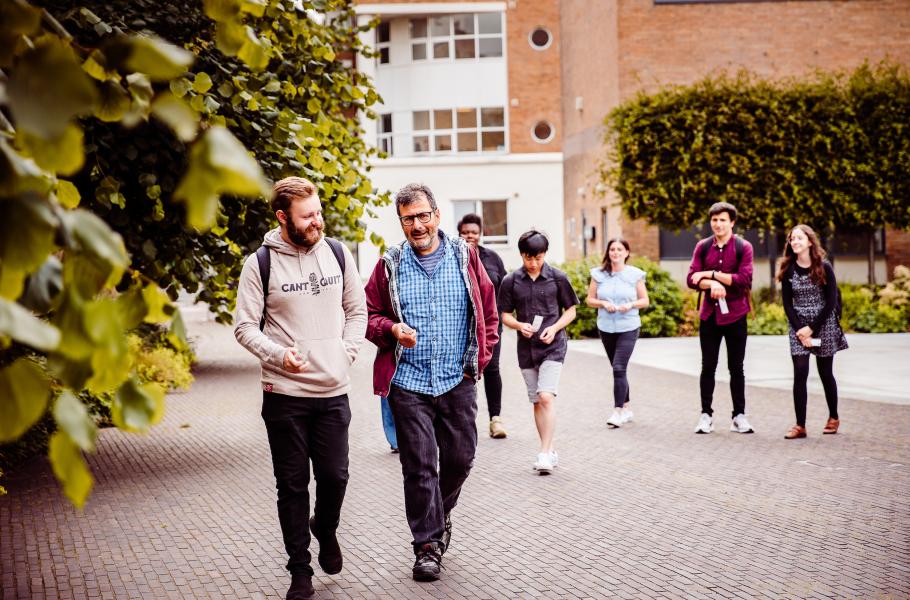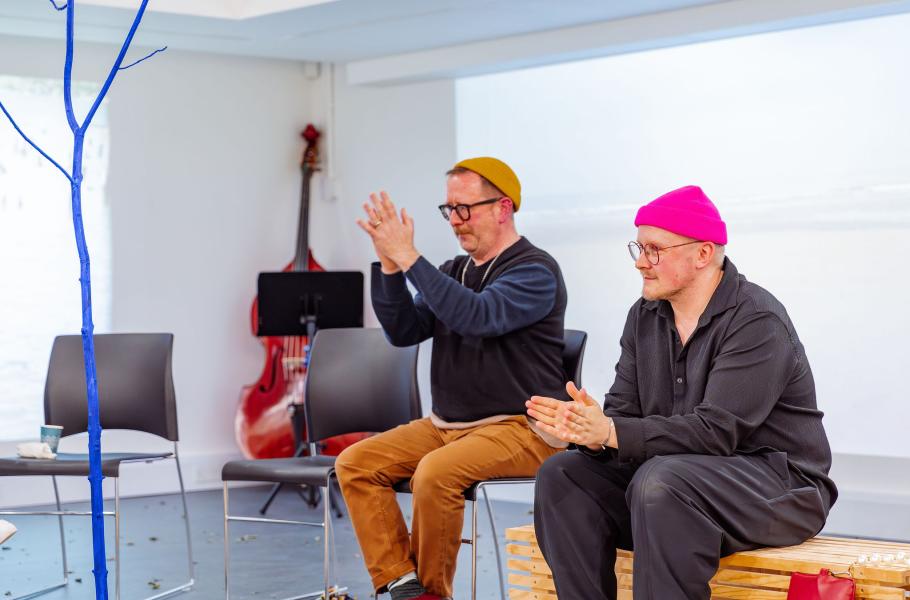Two Destination Language
Two Destination Language
In The Dark
September 1st, 2017
We’ve a week coming up in the Nuffield Theatre at Lancaster Arts, part of the support we’re getting through the Nuffield Bursary this year. We’re going in with just some ideas.
This is always a risk. It’s a privilege to be able to spend time in a technically supported space before we’ve any clear sense of what our show might be. For the way we work, though, it’s a vital stage: we need to be able to try the visual ideas, feeling what they achieve (or fail to achieve) as we build our sense of the possibilities.
This work has some highly political starting points around otherness, othering and difference. But we don’t want to set out with a story to tell: we want those ideas to come through the theatricalisation of bodies in space, and to offer future audiences the space to interpret these without the frame of spoken words. That’s exciting for us, and it means we’re in a more visually led process than normal.
As we plan our time in the theatre, we’re increasingly aware of questions of scale. If the piece we make is for spaces like the Nuffield Theatre, then many of those large studios are not spaces we’ve worked in before. They’re new venues for us, and that means new audiences. Is that realistic? Will they come?
If we’re to realise our artistic ambition, there’s no choice but to try. We can’t let ourselves be hemmed in by the width of a studio we’ve filled before, or we’re just doing the same stuff again and again. Reliability has its place, of course, but each project has its own path.
And so, even as we look forward to taking those first tentative steps in the dark of a theatre, we’re surrounded by doubts about the practicalities of working on this piece. — the things we don’t know about its eventual life. That’s where it’s clear Lancaster Arts has been thinking about how to support artists: the bursary includes producing advice and support, time to talk through these questions and discover the practical shape of our project’s future.
That help over the coming months will be as important as the space itself in bringing our ideas to fruition, as we map its place in the artistic landscape and light the path ahead.
Starting Again
September 20th, 2017
Shining lights on fabric and our own bodies might not sound like a terribly persuasive premise for a week of work, but during a week in Lancaster Arts’ Nuffield Theatre (as Nuffield Bursary recipients for 2017) it’s been brilliant.
The first day, we figure out how we can fly things. What ropes, what bars, where in the space we can use. We dig through an archive of the materials which have transformed the bare cement blocks of this room into a theatre.
And then we begin to play. We shift around the elements of our world, and place ourselves amongst them. This is what we’re playing with — difference — and it can be tiny and it can be huge, it can be funny and it can be heart-breaking. The technical support we have from David McBride, a lighting designer with a keen sense of how light contributes to the dramaturgy of theatre, gives us ever-increasing opportunities to try new ideas. With each shift of a lantern, each change to the order of our elements on the stage, we see new possibilities.
This has to stop. We need discipline.
We create a simple sequence of movement which allows us to move through the different parts of our space, a range of actions and speeds. Repeating this, we can more precisely plot the differences we’re interested in: the relationships which develop between a person and an object, a mood that person travels through, an interesting difference between one body and another doing the same thing differently.
We realise we’re building a kind of theatrical microscope. Everything is enlarged. Watching, the tiniest shifts demand our attention. This is working.
And all too quickly, it’s over. We’re taking everything down, returning to the bare walls and fluorescent working lights. All that has happened exists only in our memories and notes: the videos we’ve made record only the biggest changes, the subtleties of mood and rhythm and those exciting moments between light and shadow lost between its digital binaries.
And hasn’t that been the point? That the differences are so delicate that explaining them, recording them, describing them, is a futile attempt? It’s a satisfying week.
Now we have the model of our microscope, we must find the funding to build it. Here’s hoping that part of our journey will be just as fruitful!




